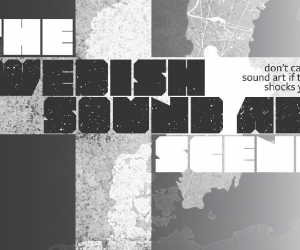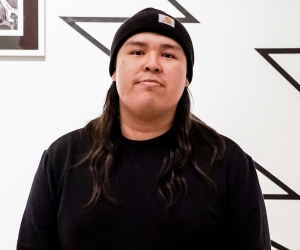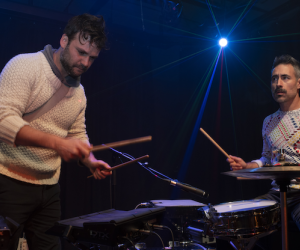
Like many performing musicians, I considered leaving the music business in 2020. The confluence of loss of work due to the pandemic, exhaustion from years of gig-hustling, and the intensity of social, political, and environmental crises left me wanting to help directly (on good days) or hide completely (on other days). I needed to see change in my own life, in the music industry, and in the world. After a winter of deliberation during lockdown, my partner—who is also a performing musician—and I decided in the summer of 2021 to move from Montreal to Manitoba, where we both grew up. While the act of leaving a physical community used to have an air of finality, in the current era of easy long-distance communication it is much easier to stay connected to multiple places. Still, I worried that being active in the Montreal music community for the past twenty years was what had made my music career possible. I prepared to start over.
Shortly after deciding to move, I received an invitation from trumpeter and composer Nicole Rampersaud to participate in Understory, a cross-Canada collaborative recording project and series that she was curating with fellow improvising musician-composers Parmela Attariwala (violin, viola) and Germaine Liu (percussion). Named for the most biodiverse layer of the forest ecosystem—the one that exists between the canopy and the forest floor—Understory had been designed specifically to connect improvisers from different parts of the country, so my impending move would not impede participation. The recording process would take place over the summer of 2021, which would make it my first music project after moving back to Winnipeg. I had the surprising sense that my music world was not contracting, as I had feared, but was instead expanding.
I said yes.
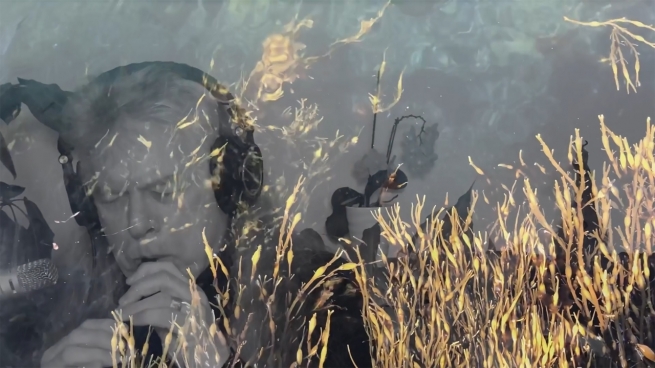
Rampersaud, Attariwala, and Liu were all based in Toronto until 2018, when Rampersaud moved east to New Brunswick. Attariwala moved west to British Columbia the following year. All three sound artists noticed that while there existed strong improvisation communities in their respective cities, they were not meaningfully interconnected. During the first year of the pandemic, this sense of insularity was augmented by travel restrictions. At the same time, new technologies that allow artists to collaborate remotely were facilitating an abundance of online music projects. This led the way to Understory.
While musicians have overcome pandemic restrictions with an array of creative solutions, improvising artists have shown themselves particularly adept at adapting to the new parameters. Creating within constraints is fundamental to improvisation in any artistic medium, and improvised music lends itself well to experimentation in format as well as in aesthetic, allowing artists of different idioms to work together. The Understory curators saw an opportunity to foster connections between Canadian music communities based on this unique ability of improvisers to co-compose works using new methods of distance communication.
In June 2021, I sat down to begin a lively video chat with the three curators a few days before I left Montreal. Wedged between stacks of boxes, with empty shelves as my Zoom background, I was immediately immersed in deep conversation with the three visionary artists in their respective homes and time zones. Their sincere reflections about Understory’s formation and purpose were punctuated with frequent bursts of laughter.
While the musical practices of the curators vary widely, improvisation is a shared priority. “I’ve found that improvisation has served as a way to carve a path through a broad range of communities and practices,” says Rampersaud, whose work ranges from experimental improv to graphic scores for field recordings.
For Liu, discovering improvisation was key to pursuing an authentic path in music. “When I was first learning about improvisation, I was like, Wow, there’s a space for me to exist,” she says. “The relationship I’ve built with percussion and found objects is through improvisation.”
“We’re thinking about different ways to bring people from different musical practices and cultural practices into communication, and improvisation is the way to do that,” adds Attariwala.
The first season of Understory featured forty-two artists from an array of improvisation practices, organized into fourteen trios. Each trio created three new works by recording and sending audio tracks to each other in rotation over a four-week period. Each member also contributed videos which were edited together to create a visual element for the online performance of their new works. Communication within the group was as simple as sending recordings or as involved as discussing concepts and preferences for improvisation and composition techniques. Participants used whatever recording gear they had access to at home and were supported by an audio engineer, which allowed for the artists’ varying comfort levels with the recording process.
“The most important thing is that you feel comfortable creating,” says Rampersaud, “We take care of everything else."
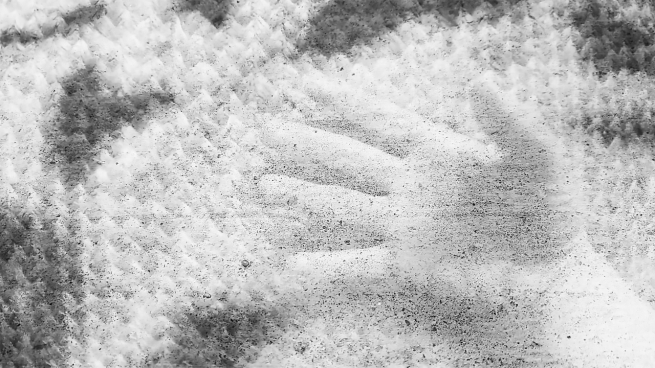
The first set of the inaugural Understory season was created by a trio made up of Vancouver-based Lan Tung on erhu, Montreal-based Gabriel Dharmoo on voice, and Toronto’s SlowPitchSound (aka Cheldon Paterson) on turntables and sound design. Like most of the Understory trios, this project was their first collaboration. Their first actual conversation as a group was their video conversation with me for this article—this time, I was seated at a makeshift desk made from a suitcase and a yoga mat a few days after moving to Winnipeg. We met during the fourth and final week of the trio’s creation process, during which their newly completed pieces were being mixed and mastered. They had chosen to send their recordings to each other with minimal verbal explanation, trusting the artistic direction of each piece to the musical choices of the next person in the rotation. Their only contact was a query from SlowPitchSound about the use of sound editing techniques, as opposed to the complete takes of unedited acoustic improvisation that Tung and Dharmoo were doing. After our conversation, they stayed on the call to choose titles for their pieces: Joyful Caution, Unfurling Insides, and Freshwater Organism (audio included on the Musicworks 140 CD).
The music this trio made sounds surprisingly spontaneous considering the physically distanced composition technique. The pieces are characterized by a steady flow of distinctly textured motifs that are interwoven and echo through the sound design. For their video element, they filmed their faces or hands in real-time performance, giving the online audience a hint of live-show feeling.
Their greatest challenge was the lack of body language used to compose spontaneously in a unified way in a live-improv setting. Each musician said they listened to the recordings they received before recording their layer, to have an idea of the shape and length of the piece. They appreciated the small-group size of this project, combined with the total freedom to improvise or compose however they chose.
“Improv is a very feeling thing,” SlowPitchSound says.
While their individual musical backgrounds are contrasting, the common denominator in this trio is the use of sonic vocabulary from their own communities of origin or interest, in combination with the freedom of improvisation to move past genres and traditions.
Breaking into free improvisation and contemporary classical scenes has been a welcoming experience for SlowPitchSound, who took the turntablism and sound-design skills from his hip-hop roots into the soundworlds of classical and contemporary music, experimental improv, and field recording. “I went into the different worlds holding my own space and trying to adapt and share information,” he says.
Tung’s early improvisational encounters took place at Vancouver Creative Music Institute workshops, where playing melodies on a culturally specific instrument was new to the usual free-jazz textural aesthetics. She believes the definition of improvisational freedom is expanding to include all the sounds in an artist’s sonic vocabulary. “It adds more freedom to the space as well,” says Tung, whose unique sound combines traditional Chinese music with improvisation and composition. Musicians are growing more confident about bringing their cultural or genre-specific sounds and skills to improvisation communities: “It opens things up and makes them more interesting.”
Dharmoo also sees improvisation as a place for different genres and music communities to meet, mix, and learn from each other. “I have been doing lots of drag [performing as Bijuriya] to engage with other communities—both queer culture and South Asian culture. Everything is becoming more and more hybrid now.” Shifting his focus from composition to improvisation is as much a change in mindset as it is in method, he says. “Fixed versus in-flux, in-tune, happening—and I am way more into that second way of doing. I’m thinking of staying true to who I am and to what I think is a better way of being in the world.”

At the heart of Understory’s vision is the desire for a better way of being in the world. “The outcome of the pandemic and musicians being forced to use technology has illuminated a different way forward,” says Rampersaud.
While technology may have been the catalyst for the series, the curators had long been considering how to implement systemic change in the industry. “We, as a society, are in this moment in time, in contemporary history, where things are going to have to change because we’re realizing that the way that we’ve been organizing our systems is collapsing. We’re part of an evolution,” says Attariwala, who explored the relationships between Canadian culture, policy, arts funding, and identity as part of her doctoral research. “Once I did the analysis of the bigger systems including political systems and social justice systems, I didn’t want to go back.”
Understory has made a concerted effort to root their system in diverse contributions. “We are so used to being under one person—something that perpetuates gatekeeping,” Attariwala explains. “Having a single artistic director is when things start to become intransigent.”
According to Liu, “This is a great opportunity not just for the three of us to negotiate and work together but for the groups themselves, understanding responsibility and relinquishing and taking power accordingly.”
In addition to the circular structure of both the leadership model and the creative process, Understory will have a new team of curators every season to encourage new connections and highlight participants from different communities.
While improvisation communities are often an oasis for artists who are moving away from established cultural systems and expectations, many musicians remain concerned about gatekeeping. Free jazz was Rampersaud’s way in. “Meanwhile, I did everything but!” she laughs, adding, “There is a really clear division of what is and what isn’t improvised music.” Frustration about exclusivity is met head-on in Understory. According to Rampersaud, “If we live in this place of anger, it increases the points of division. That’s how you make a buck in big tech. We are using technology—almost subverting it—and forcing the issue to find points of commonality. This is a step toward finding what the new way is.”
Online spaces can, in fact, be conducive to developing greater sensitivity around inclusion and safety, Liu says. “When you’re not in the same physical space, you are actively not only creating space for yourself, but also imagining what it’s like to create space for someone else to exist in that piece that you are creating together. In some ways that is more work in terms of empathy and listening, but this way of making music allows us to sit there, reflect and break the structures of time that we’ve created in the past.
“In Understory, these are things that we are thinking about—to use this as a springboard for learning how to recreate spaces, how to investigate safe spaces, spaces where different people can thrive and feel good about experimenting and collaborating.”
Understory’s values reflect a growing movement toward illuminating inclusive spaces in the music industry, driven by the wider sociopolitical climate. “After the death of George Floyd,” says Attariwala, “the arts councils were very supportive of initiatives that pushed against old systems that had been oppressive.” Training programs such as Partners for Youth Empowerment have been influential to Understory and other arts organizations, offering widely accessible workshops in leadership grounded in social justice, kindness, and collaboration. New systems are emerging.
As I finish writing this article, it’s my turn to collaborate with my Understory trio-mates— Brandon Auger in Halifax and Bea Labikova in Toronto—in the final week of the project’s schedule. The knowledge that we are part of an ecosystem of interconnected Canadian improvisers led by change-makers listening to the forest floor gives me hope for moving forward in music.
FYI: The new works produced during Understory were recorded between May and September 2021. From July 2021 to January 2022, a show featuring performances by two trios is being released online every third Thursday of the month on the Understory website and via partner presenters including the Canadian Music Centre’s Multilocation Festival and the Museum of Contemporary Art in Toronto.
